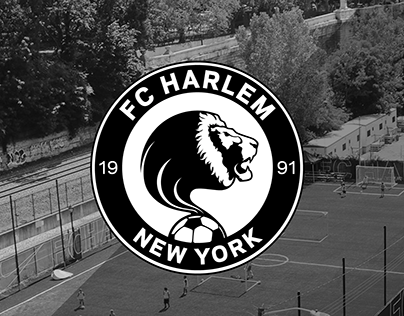Leveling the Playing Field: Transforming Harlem’s Soccer Future
While soccer—or football to the rest of the world—is often called the “beautiful game,” its beauty has yet to fully reflect the rich tapestry of this country. Now, the game becomes even more beautiful with Harlem’s own FC Harlem—a youth football club in NYC—joining the newest competition tier of MLS NEXT. This gives FC Harlem the opportunity to participate in the United States’ elite youth soccer development pathway-to-pro system.
To those outside of soccer—a vast number we’re working to decrease— this may not seem like a big deal. However, for those of us committed to engaging African American communities in the world’s biggest sport, this is a game-changing moment.
Before this announcement, there were very few urban clubs in America’s elite development system focused on serving Black and Brown youth players. Unlike suburban and pay-to-play clubs, urban grassroots programs like FC Harlem are rare. This is why FC Harlem’s participation in MLS Next is so significant—not just for Harlem, but for other urban communities that have long been overlooked. These clubs often lack the funding and resources that more traditional clubs receive, and they don’t always carry the same prestige as clubs where parents can afford to pay thousands of dollars for their kids to participate. This financial barrier often dictates access to better training facilities, licensed coaches, and scouting opportunities—advantages that urban clubs have historically struggled to obtain.
These challenges highlight why increased investment in urban soccer initiatives is crucial. FC Harlem’s elevation to MLS NEXT is bigger than one club—it represents a step toward a more sustainable pathway for talented players from underrepresented communities to reach the highest levels. This milestone for FC Harlem is also a milestone for young players in Harlem who now have a clearer route to professional soccer.
So what does this mean for the future of soccer development in America?
“The most important thing is that a pathway for excellence exists in communities like Harlem, where traditionally—in sports like soccer—it requires kids to leave their community,” said Irv Smalls, the Executive Director of FC Harlem. “Through our participation in MLS Next, we hope to develop the elusive, creative American player that I believe lives in communities like Harlem. Youth from inner cities are accustomed to making things happen with less, and using it to their advantage. This is a platform that, when these players are developed, the world will see.”
Smalls believes this is the key to getting more of our kids to the top. He breaks down the two models of American soccer: the free-to-minimal-cost model in urban communities and the pay-to-play system dominating the suburbs. This divide forces underrepresented families to take alternative routes to the same goal—college scholarships, professional contracts, or careers in the sport. Recognizing FC Harlem’s brand power, Smalls aims to leverage it to create real opportunities for urban youth while pioneering an innovative approach to elite development.
“If pay-to-play represents an entire luxury hotel, clubs like FC Harlem just need a room in the hotel,” said Smalls.
Since its founding in 2005, FC Harlem has long been a beacon for youth development and community empowerment. This next step in its journey comes at a pivotal moment. As the world prepares to descend on the U.S. for the 2026 FIFA World Cup—the largest edition of the tournament yet, with 48 nations competing across 11 cities—there should be an urgency to engage the African American community.
As soccer fever builds in the U.S., so does the need to engage communities beyond the traditional market. To reach its full potential in the world’s most diverse country, soccer must not only connect with existing fans in communities of color but also draw in broader sports fans who have yet to see themselves reflected in the game’s infrastructure, as well as those unaware the game has left them out.
Yes, the beautiful game is evolving in America—especially during this time just ahead of the 2026 World Cup—but for it to truly reflect this country’s rich multitude of cultures, there must be greater investment, expanded access, and recognition for the talent that has long been overlooked.
FC Harlem’s entry into MLS NEXT is proof that the system can change—but will it change fast enough?

